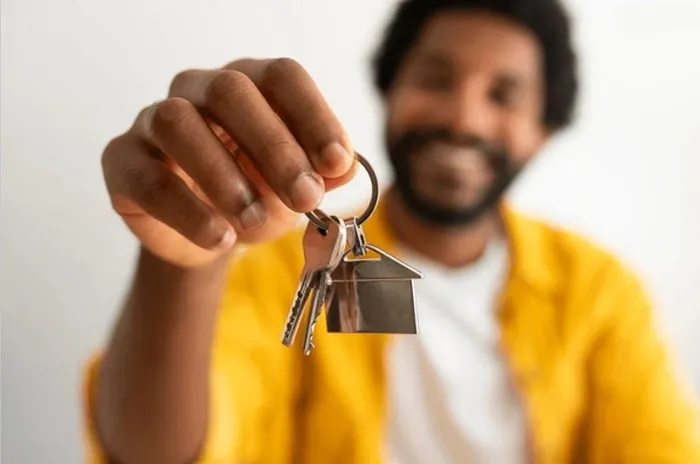The critical insurance gaps facing South African homeowners

With South Africa facing an alarming R50.4 trillion insurance gap and thousands of homes lost annually to fires and floods, most homeowners remain dangerously underprotected.
Image: File picture
Why every homeowner in South Africa needs sufficient insuranceJohn Wessels, Executive: Product and Analytics, BetterSure Financial Consultants
For most South Africans, owning a home is one of the greatest financial milestones that can be achieved and can represent up to 80% of a family’s total wealth, but it can also be daunting. With rising natural disasters, increasing crime rates, and a fragile economy, many South African homeowners are leaving themselves exposed by not investing in sufficient insurance. Fires and floods alone wipe out approximately 20,000 homes a year, and around 10,000 geysers burst every month.
Sufficient cover is not just a safety net, but a necessity. However, even with imposing risks, many South African homeowners are underinsured, putting their investments and loved ones at risk. In addition to South Africans’ homes being at risk, their livelihood and families are also at severe risk. The Association for Savings and Investment South Africa (ASISA) just released the 2025 Insurance Gap Study, which reveals that at the end of 2024, the national combined life insurance gap for death, disability, and critical illness events was estimated at a staggering R50.4 trillion. On average, South Africans have a shortfall of R3.1 million in death and disability cover, and more than 85% of breadwinners don’t have any critical illness cover.
The numbers are discouraging, considering that approximately 651 South African breadwinners lose their ability to provide for their families and keep their homes due to death, becoming disabled, or suffering a critical illness.
While it can be challenging to think about insurance when so many are juggling high food and fuel prices, South Africans must have enough cover in place to ensure that their loved ones are financially protected and can continue to stay in their homes when they face life’s unexpected events including death, disability, being diagnosed with a serious illness, structural damage to a home, or the loss of possessions.
Life insurance
While life insurance is not typically thought of as a home insurance product, it plays a critical role in helping you take care of those closest to you. According to the National Income Dynamics Survey (NIDS), 37.1% of households with a home loan do not have life insurance, meaning if they pass away, their family will have to continue paying the bond or sell the property to repay the loan.
Life insurance ensures that your bond and other financial needs, like your home’s ongoing maintenance and your children’s education, are covered if you die, become disabled, or are diagnosed with a serious illness. By making sure that you have sufficient cover and benefits, you can ensure that your family can stay in the home you’ve created together if you’re no longer able to provide for them.
Homeowners cover
Homeowners insurance, also referred to as building or home insurance, protects the physical structure of your home against a range of insured risks that include damage caused by geysers, water, fire, landslides, floods, or lightning, as well as malicious damage to the property. Home insurance is a bank requirement and protects the roof over your head. When the bank gives you a loan, they do it against your asset, in this case, your home, which means that if your house is destroyed because of fire or another unexpected event, you’re still liable to pay the money back to the bank.
By making homeowners cover a requirement, the bank can then ensure that you have the funds available to repair or rebuild your house, so that you’re not left paying back a loan for an asset that no longer exists.
Home content cover
Household contents cover protects everything inside your home, from your clothes, electronics, and personal valuables, to your furniture and appliances. Having home contents cover in place means that if your belongings are lost, stolen, damaged, or destroyed due to events like theft, fires, and catastrophic weather, which are all on the rise, you can afford to replace them. If you decide to specify high-value items, including jewellery, laptops, or anything sentimental, your cover can protect these valuables outside of your property, including when you travel, are at work, or go out.
The hidden conversation
It is important to understand the difference when buying a home with a bond compared to cash. Home loan buyers often benefit from the process, with insurance being one of the key requirements to go ahead with the bond. According to the National Income Dynamics Survey (NIDS), 50.2% of households that own a home with a home loan have short-term insurance, compared to only 5.4% of households that own a home without a home loan. This means that 49.8% of households with home loans do not have short-term insurance, even though it is a bank requirement.
Cash buyers, on the other hand, bear full risk as there is no bank to enforce cover and often only realise the importance of that cover once it is too late. Consulting a financial services adviser and making sure you invest in sufficient cover is crucial because the risks of being underinsured for home and life cover outweigh the costs of investing in your home, and ultimately, your future. A good place to start is by making sure your existing cover matches your needs and updating your cover as life changes occur.
As a homeowner, protecting your home, belongings, and loved ones against the unexpected is important. The best way to do that is by ensuring that you have comprehensive cover in place from day one so that you can secure a safe future for yourself and your family.
* Wessels is the executive of product and analytics at BetterSure Financial Consultants.
PERSONAL FINANCE